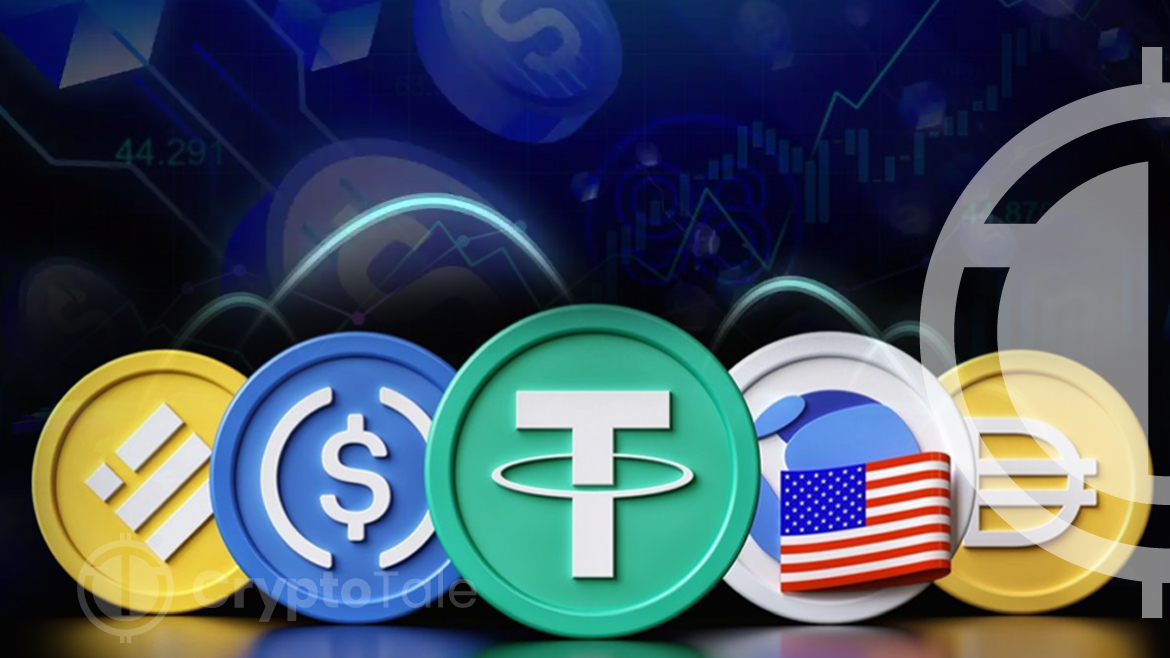
Stablecoins have emerged as focal points in the cryptocurrency realm owing to their rapid expansion and escalating global applications. Originally conceived to counteract the pronounced price volatility of unbacked crypto-assets such as Bitcoin and Ether, they now play pivotal roles across diverse sectors within the crypto world.
Role of Stablecoins in the Crypto Ecosystem
With the rapid development of the crypto industry, cryptocurrencies have multiplied in value and use. Initially sought as a refuge during market volatility and for asset trading, stablecoins have evolved with the rapid expansion of DeFi. Despite their modest share in the crypto market, stablecoins wield significant influence in crypto, facilitating asset trading and serving as liquidity anchors in DeFi. Tether, USD Coin, and Binance USD stand as dominant players in this space.
Different Types of Stablecoins
1. Fiat-Backed Stablecoin:
The most prevalent stablecoin in the market is backed by fiat currencies, such as the US dollar, Euro, Pound, and Yen, maintaining a 1:1 ratio. USDC and USDT are among the leading examples. Primarily utilized for trading, lending, and borrowing in the cryptocurrency sphere, these stablecoins play a vital role in facilitating various financial activities.
2. Crypto-Collateralized Stablecoins:
Crypto-collateralized stablecoins are pegged to the value of a more established cryptocurrency. To mitigate the risk of volatility in the reserve cryptocurrency, these stablecoins are overcollateralized, meaning the value of the reserve cryptocurrencies exceeds the value of the issued stablecoins several times. For example, $10 million worth of cryptocurrencies might be held as a reserve to back $5 million worth of crypto-collateralized stablecoins, providing insurance against a minimum 50% decline in the reserve cryptocurrency’s price.
3. Commodity-Backed Stablecoins:
Stablecoins of this kind are tied to the value of commodities such as gold, silver, industrial metals, crude oil, or real estate. Investors favor commodity-backed stablecoins as they provide a convenient means to invest in assets like gold and crude oil without the complexities of sourcing and storing them directly.
4. Algorithm Stablecoins:
Algorithm stablecoins leverage algorithms to maintain price stability. Unlike crypto-collateralized or fiat-backed stablecoins, Algorithm stablecoins don’t rely on reserve assets to maintain their value. Instead, they rely on computer algorithms to regulate the supply based on market demand and adjust the price. When the market is down, they permanently burn coins from circulation, and when the market is high, they mint new coins.
Why Are Stablecoins Important?
Stablecoins play a vital role in the crypto economy due to their diverse range of use cases. They form a distinct category of cryptocurrencies tailored to address volatility concerns. Similar to traditional currencies, stablecoins serve as a medium of exchange, enabling transactions for goods and services while facilitating conversions with fiat currencies and other cryptocurrencies. In contrast to volatile cryptocurrencies like Bitcoin and Ethereum, stablecoins offer a more reliable store of value.
Stablecoins inherit many advantages of cryptocurrencies, including security, privacy, and swift transaction speeds, all while circumventing the inherent volatility associated with traditional cryptocurrencies. They are increasingly integrated into decentralized finance (DeFi) ecosystems, serving as collateral for loans and other financial products, and are widely adopted as a means of exchange within various decentralized applications.
How do Stablecoins Bridge the Gap Between Fiat and Crypto Currencies?
1. Promote Cryptocurrency Adoption:
Stablecoins serve as a gateway for newcomers entering the realm of cryptocurrencies by providing a stable unit of value that mitigates worries about price volatility. This stability encourages wider adoption of digital assets among users, easing their transition into the cryptocurrency space.
2. Store of Value:
Amidst the volatility of the crypto market, stablecoins serve as a reliable store of value for both individuals and institutions. Individuals from countries with high inflation or currency instability often opt to preserve their wealth in stablecoins, shielding it from rapid devaluation and gaining entry into the global financial landscape.
3. Financial Inclusion:
Anyone with a smartphone and internet access can gain access to stablecoin. Stablecoins can really help developing countries promote financial inclusion by providing a stable, low-cost, and easily accessible digital currency to the underbanked and unbanked population and helping them join the global economy.
4. Cross-border Transaction:
Conventional cross-border transactions are often sluggish and expensive, burdened by conversion fees and intermediary bank charges. In contrast, stablecoins facilitate swift transfers across borders while mitigating exchange rate fluctuations. This is achieved by anchoring the stablecoin’s value to the reserve of the respective country, ensuring seamless and cost-effective international transactions.
5. DeFi:
In decentralized finance (DeFi), stablecoins are widely used for borrowing, lending, yield farming, and other financial activities. Their stability makes them ideal targets for users who want to minimize risks while participating in the growing DeFi ecosystem and potentially earning higher rewards.
Stablecoin Regulation
Stablecoins, as one of the main parts of the crypto ecosystem, have garnered significant attention from regulators worldwide. The Markets in Crypto-Assets Regulation (MiCA) stands as the first framework to provide comprehensive regulation for cryptocurrencies. Here are some of the aspects of stablecoin regulation:
- Stablecoin Issuance: To issue stablecoins, issuers need to obtain authorization from the relevant regulatory authorities. This process involves compliance with AML/KYC, transparency, and more.
- Reserve Requirements: Regulators may require stablecoin issuers to follow stringent reserve requirements, ensuring they hold a sufficient amount of reserves to back the stablecoins in circulation. This ensures the reliability and stability of stablecoins.
- Regulatory Compliance: Stablecoin issuers are required to implement robust anti-money laundering (AML) and know-your-customer (KYC) procedures to prevent money laundering, terrorist financing, and other illegal activities.
- Regulatory Oversight: Regulatory authorities may establish oversight to monitor the activities of stablecoin issuers and service providers. This is to ensure compliance with the relevant regulations and standards. Usually, an oversight involves regular audits, reporting requirements, and more.
- Cross-Border Regulation: Due to stablecoins’ global nature, regulators need to collaborate across various jurisdictions to develop a unified regulatory framework and address cross-border regulatory challenges.
Use Case of Stablecoins in the Crypto Ecosystem
- In countries with high inflation or economic instability, stablecoins are increasingly utilized as a medium of exchange for payment and remittances.
- Stablecoins are being integrated into e-commerce platforms as an alternative method of payment.
- CBDCs are currently exploring the potential use of stablecoins to issue their digital currencies.
- Stablecoins additionally serve as an in-game currency, enabling players to monetize their virtual assets.
- The DeFi ecosystem has experienced significant growth largely aided by stablecoins, which are used for lending, yield farming, and borrowing.
Conclusion
Stablecoins are foundational pillars of stability and predictability in the ever-changing cryptocurrency landscape. Their capacity to uphold a steady value amid significant market fluctuations renders them indispensable across a spectrum of regulatory scenarios. From decentralized finance (DeFi) to trading, remittances, and daily transactions, stablecoins provide reliability in navigating volatile periods, cementing their pivotal role in the cryptocurrency ecosystem.














